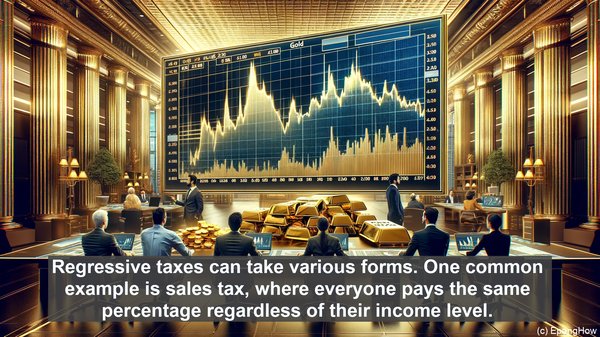Introduction: The Essence of Taxation
Hello, everyone! Taxation is a fundamental aspect of any economy, enabling governments to finance public services and initiatives. However, not all tax systems are the same. Today, we’ll delve into the contrasting features of regressive and progressive taxation, two widely discussed models that shape the distribution of tax burdens. Let’s get started!

Regressive Taxation: An Overview
Regressive taxation is a system where the tax burden falls disproportionately on lower-income individuals. In this model, the tax rate decreases as the income increases. As a result, those with lower incomes contribute a higher percentage of their earnings towards taxes compared to higher-income individuals. This can sometimes lead to a situation where the less affluent end up paying a larger share of their income in taxes than the wealthier segments of society.
Examples of Regressive Taxes
Regressive taxes can take various forms. One common example is sales tax, where everyone pays the same percentage regardless of their income level. While the amount may seem equal, it has a more significant impact on individuals with lower incomes, as they have to allocate a larger portion of their earnings for essential goods and services. Similarly, property taxes, which are often based on the value of the property, can also be regressive, as the tax burden may be relatively higher for those with modest homes or properties.
Progressive Taxation: A Different Approach
In contrast, progressive taxation follows a different principle. Under this system, the tax rate increases as the income rises. The idea behind progressive taxation is to ensure that those who earn more contribute a higher proportion of their income towards taxes. This approach is often seen as a means of achieving a more equitable distribution of the tax burden, as it takes into account the ability to pay.
Examples of Progressive Taxes
Income tax is a prime example of a progressive tax. It typically has multiple tax brackets, with higher-income individuals falling into higher brackets and thus paying a higher percentage of their income as tax. Another example is the estate tax, which is levied on the transfer of wealth from one generation to the next. By targeting large estates, this tax aims to address wealth concentration and promote a more balanced economic landscape.
The Impact on Income Groups
The choice between regressive and progressive taxation has significant implications for different income groups. While regressive taxation may seem appealing due to its simplicity and ease of implementation, it can exacerbate income inequality, as it places a relatively heavier burden on those with lower incomes. On the other hand, progressive taxation, while often more complex, can help mitigate inequality by ensuring that the tax burden is proportionate to one’s ability to pay.

The Broader Economic Perspective
Taxation is not just about revenue collection; it also has broader economic implications. Progressive taxation, by reducing the after-tax income of higher earners, can help address wealth concentration and promote a more balanced distribution of resources. Additionally, the revenue generated from progressive taxes can be channeled towards public services, infrastructure, and social welfare programs, which can have a positive impact on overall societal well-being.
